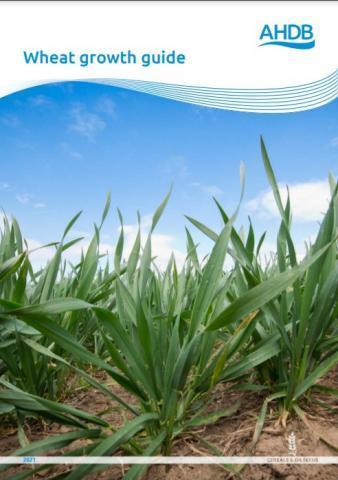Introduction to wheat growth and benchmarks
The growth stages of cereals
It is useful to break down the cereal life cycle into various growth stages. By understanding the main crop development stages, it becomes easier to measure crop performance and informs husbandry choices.
Key development phases and growth stages in wheat
As wheat progresses through its life cycle, the crop changes in form (development) and accumulates dry matter (growth). Discover how these changes can be described by key cereal growth stages and developmental phases.
Key development phases and growth stages in wheat
How to use benchmarks to assess cereal growth
Measurements are vital to good management and for learning. As well as assessing weeds, pests and diseases, managers must assess the cereal plant itself. Crop progress, structure and final performance can then be compared with benchmarks (where available) or new targets.
How to use benchmarks to assess cereal growth
Natural resource capture and conversion by cereals
Discover how wheat and barley capture and convert natural resources (solar energy, carbon dioxide and water) into edible (e.g. grain) and other forms of biomass/energy.
Natural resource capture and conversion by cereals
The foundation phase
Establishment in wheat (germination and emergence)
From the seed, to its germination and emergence, the early part of wheat’s foundation phase establishes the crop and determines plant populations. Learn how to optimise and measure these early growth stages.
Establishment in wheat (germination and emergence)
Leaf emergence and tillering growth stages in winter wheat
The production of leaves and tillers (side shoots) is an essential part of canopy development. Careful management is needed to optimise and protect these structures to help maximise potential wheat yields.
Leaf emergence and tillering growth stages in winter wheat
How to promote and measure root growth
Ensuring that wheat and barley crops have well-developed root systems is essential for optimum water and nutrient capture. An understanding of the factors that influence root growth makes it easier to identify management interventions.
How to promote and measure root growth
Nitrogen supply and demand in winter wheat
Around half of wheat nitrogen (N) demand is met from soil supply, with the other half coming from applied nitrogen fertilisers. Find out about the sources of nitrogen and the crop growth stages when it is taken up.
Nitrogen supply and demand in winter wheat
How to measure plant populations, nitrogen uptake and dry matter in cereals
An estimate of cereal plant populations and growth (in a quadrat) will indicate if targets have been met. Use this information to guide in-season crop management decisions and future strategy (e.g. seed rates).
How to measure plant populations, nitrogen uptake and dry matter in cereals
The construction phase
Management of canopy expansion and senescence in winter wheat
Canopy size determines the proportion of sunlight intercepted, which drives the accumulation of dry matter. Learn how to manage canopy growth and lifespan to help maximise winter wheat yields.
Management of canopy expansion and senescence in winter wheat
How to measure growth area index (GAI) in cereals
The crop’s green area index (GAI) is the ratio of green leaf and stem area to the area of ground on which the crop is growing. Use measurements of GAI during the growing season, alongside targets, to guide canopy management.
How to measure growth area index (GAI) in cereals
Biomass growth and dry matter accumulation in wheat
Biomass growth represents the net effect of photosynthesis, after losses from respiration and leaf fall. It can be assessed by measuring changes in above-ground dry matter over time.
Biomass growth and dry matter accumulation in wheat
Measurement of stem extension and stem reserves in wheat
Careful management of cereals is essential to help the crop reach its optimum height and minimise lodging risks. Learn about the main-stem benchmarks and how stem reserves provide significant amounts of carbohydrates to filling grains.
Measurement of stem extension and stem reserves in wheat
The production phase
Ear formation, grain development and crop ripening in wheat
Capacity for grain filling is set by grain number per unit area and the storage capacity of each grain. Satisfying the capacity depends on photosynthesis, as well as the redistribution of stem reserves.
Ear formation, grain development and crop ripening in wheat
The main components of yield in wheat
From the number of ears to the weight of individual grains, this page outlines the main components of wheat yields. It also includes the main crop benchmarks for yield and protein.
The main components of yield in wheat
Highly heritable wheat quality traits
Some quality characteristics, such as protein concentration, specific weight and Hagberg Falling Number (HFN), are highly heritable in wheat. Learn about the genetic (varietal) and other factors that affect these traits, as well as the typical market specifications.
Highly heritable wheat quality traits
Cereal growth guide: a glossary of terms
From anthesis to xylem, cereal growth is described with a wide array of terms. Some of the most commonly used are outlined in this glossary.






